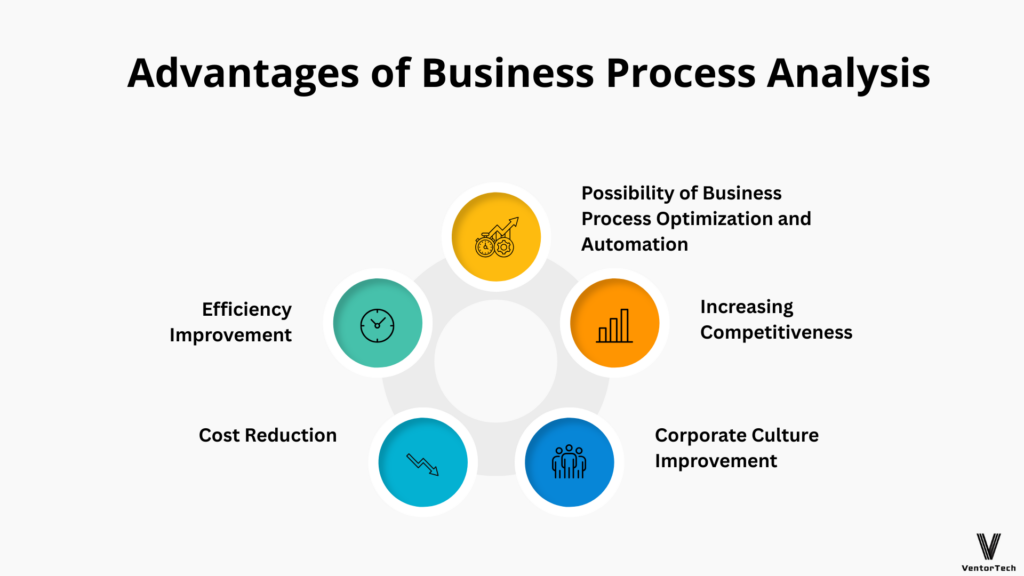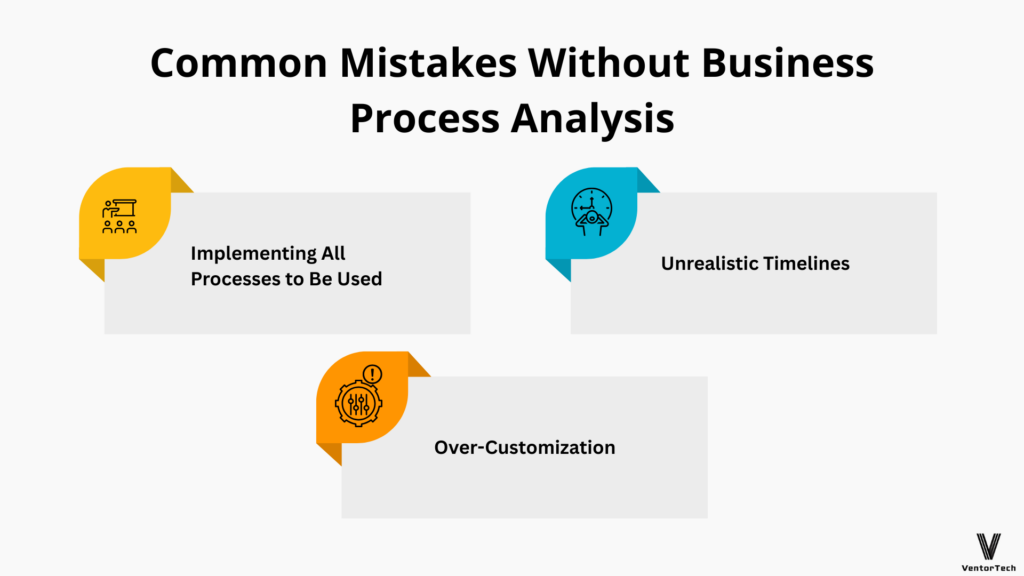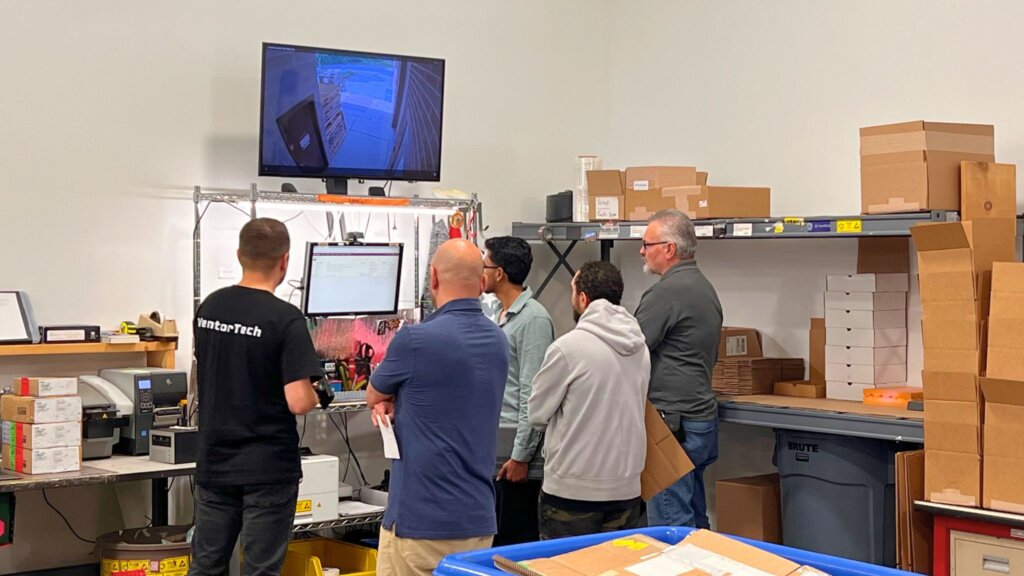Doing business in modern conditions is a rather complex process, one of the most important parts of which is business process analysis (BPA). This step, sooner or later, becomes inevitable for any company. Every business comes to the stage of development when it is necessary to optimize and automate processes in order to improve both customer service and team efficiency. At this stage, most companies start the process of ERP implementation, a tool that automates all business processes and thus helps to reduce costs and increase efficiency.
Implementation of an ERP system is a complex process that must be prepared for carefully. The technical side of implementation is important, but it is usually not the reason for failure. Before you start implementing an ERP system, it is crucial to understand the company’s business processes and needs. BPA before ERP implementation helps to identify areas that need to be optimized, reveal current business weaknesses, and reduce risks.
In this article, we will talk about the importance of preparation for an ERP system implementation, learn why BPA is a key point in the preparation process, and share more about how to do this most effectively.
What Is Business Process Analysis (BPA)?
Business process analysis (BPA) is a systematic approach to studying a company’s current business processes in order to identify inefficiencies in internal operations and determine ways to optimize them.
The main objectives of BPA include:
- reducing costs
- speeding up process execution
- increasing productivity
- making informed decisions about optimizing operations
- improving the quality of services or products
- increasing customer satisfaction
Advantages of BPA

Efficiency Improvement
Proper BPA helps to reduce the time and resources required to create marketing campaigns, employee onboarding, sales prospecting, and many other processes.
Cost Reduction
BPA helps to speed up tasks and eliminate redundancy in processes. In addition, it helps to create cost savings, which has a significant impact on the financial side of doing business.
Corporate Culture Improvement
How comfortable employees feel in the workplace has a direct influence on their productivity. After conducting BPA, it becomes clear which aspects need to be improved in order to increase their level of comfort.
Increasing Competitiveness
BPA facilitates the rapid and smooth implementation of new technologies, which, in turn, helps the company stay ahead of the competition in providing relevant services or products.
Possibility of Business Process Optimization and Automation
BPA is the basis for process automation, because it helps to trace the needs of the business. This leads to increased labor productivity and higher profits. BPA is the key to improving processes before automation.
Key Stages of BPA

Defining the goal
This is the first and the most important step on which resulting success depends. It is crucial to define what needs to be achieved. The most common goals include increasing profits, improving labor efficiency, and reducing costs.
Process definitions
The next step is to identify the process that is most problematic and causes inefficiency. In this case, it is important to define the boundaries of the process so that the scope of the process is not too extensive.
Process analysis
There are several methods of BPA, and it all depends on your goal. The most popular are gap analysis, value analysis, and root cause analysis.
Developing the necessary improvements
Once deficiencies have been identified, it is critical to develop improvements properly. The most popular options are optimizing important processes, removing bottlenecks, and improving customer interaction. At this stage, it is crucial to consider all potential externalities (i.e., indirect costs or benefits caused by your business).
Process implementation
This stage involves specialists from different departments, who must have enough resources to effectively accomplish the task at hand.
Outcome observation
After implementation, it is crucial to monitor the processes and to check whether the changes lead to better performance and whether they cause any external effects.
ERP Implementation Preparation
BPA is a key component in how to prepare for ERP implementation. In addition to identifying current issues, this analysis helps in ensuring that the new system is successfully integrated with the company’s existing processes.
Gap analysis before ERP implementation is obligatory, and here is why. This is the method that helps identify areas where business processes are inefficient or do not meet the company’s needs and goals. It is the gap analysis that makes it possible to identify the gap between the current and the desired process performance.
One of the other important pre-implementation ERP steps is the root cause analysis. This analytical method consists of finding and further eliminating the root cause of nonconformities and problems. The root cause analysis in ERP projects helps to improve the efficiency of business processes, prevent the recurrence of problems, and improve customer confidence and employee satisfaction.
Another interesting model for analyzing business processes is as-is versus to-be process analysis. “As is” is the description of the existing situation, while “to be” is a projective vision, which is oriented to improvement and modernization. BPA is one of the key steps before ERP implementation, since it brings a huge number of benefits and is one of the most important ERP success factors.
Strengthen Your ERP Implementation —Start with a Business Process Analysis Today!
Why BPA Is Critical for ERP Success
BPA is an unavoidable step for companies that want to successfully implement their ERP system and use it without problems. The thing is that the detailed analysis allows not only for selecting the ideal system that will suit the needs of a particular company, but also to prepare it for further growth and changes. This ensures efficient team performance and minimizes the cost risks of reworking or even replacing the system in the future.
Matching Business Goals to System
The analysis allows for examination of the company’s current business processes, identification of their weaknesses and strengths, and definition of the company’s business goals. A clear understanding of the current processes and goals helps to better customize the ERP system to meet the specific needs and, consequently, reduce the time and cost of implementation.
Reducing Iteration Loops
Iteration loops are repeated stages of work on a project. Minimizing these iterations can significantly speed up the implementation process and reduce costs.
Risk Mitigation in ERP Rollout
BPA helps to identify potential problems associated with the implementation of the ERP system and take measures to eliminate potential risks in advance. The ERP readiness assessment contributes to avoiding unnecessary costs and suboptimal solutions.
Aligning Teams
Implementation of the ERP system entails many changes in the company’s work, and it is extremely important to properly prepare for this transition. In order for everything to go well, the team must work together, and all departments must communicate effectively with one another. Stakeholder alignment in ERP rollout is crucial for achieving success.
The importance of process analysis for ERP cannot be underestimated in this aspect either, as it is a key factor for coordinated teamwork in ERP implementation. It is important to note that, as a rule, BPA starts with the study of business process documentation as a snapshot of what is happening in the company at any given moment.
It is mandatory to share the results of the analysis with all teams involved, including consultants, business users, and the IT department. This way, the teams can discuss the results and understand how they need to work together.
BPA as an ERP implementation strategy helps teams to work in a cohesive manner and helps to create a unified picture of the process, thus significantly increasing the chances of successful ERP implementation.
Common Mistakes Without BPA

There are many ERP systems on the market today, and it is easy to get confused about which system is best suited for your company’s business processes. The system implemented must fit the specifics of the company, promote its growth, optimize its performance, and minimize employee resistance to change.
Having selected the ideal ERP system, it is also important to carefully prepare for its implementation and ensure organizational readiness for ERP. It is important to realize that many aspects of an implementation can go wrong if a company doesn’t do some upfront preparation and BPA. Instead, carrying out a BPA allows a company to avoid implementation difficulties and successfully grow and develop.
Implementing All Processes to Be Used
Without process analysis, it is impossible to assess the importance of each process and its impact on the business as a whole. You may find that some currently running processes are unnecessary. For example, routine processes can be automated, which will save the company’s time and money. It is also important to think about improving processes before automation. Analyzing the company’s business processes enables the company to identify its most important processes and focus on them.
Over-Customization
The great thing about ERP is that it can be customized to meet your needs. However, companies can become too fond of this process and implement all possible functions, which overloads the system and complicates its use. BPA helps to avoid this by clarifying your company’s needs. Without a process analysis, you likely will not understand which features are right for your business, while implementing all the ERP features you like may be very costly.
Unrealistic Timelines
This is one of the major problems that leads to implementation failure. ERP project planning that does not include BPA also does not contain information about the complexity of the processes, which then leads to many problems. For example, unrealistic timelines can lead to higher budgets or cause employee dissatisfaction and resistance to change, which can lead to poor performance.
What a Good BPA Process Looks Like
BPA usually involves collaboration and input of specialists from different departments, which ensures smooth process operations and high-quality analysis results. There are several methods of BPA, and below, we describe the most common ones.
Workshops
A workshop is an interactive event in which employees from different departments participate. They offer possible ways of workflow optimization before ERP implementation, discuss different business processes, evaluate their importance and efficiency, and propose their own options for process reengineering for ERP.
The advantage of workshops is their flexibility, as they can easily be adapted to specific tasks. In addition, such events increase team interaction efficiencies, which has a positive impact on the ERP implementation process.

Visual Mapping
Visual Mapping is a great tool for visualizing and analyzing processes. It uses graphical representations of processes to improve understanding of how they work and how they are organized. The benefits of data flow mapping and visual business process mapping for ERP are identifying opportunities to automate or optimize processes and facilitating communication between teams.
Applying visual mapping improves deep understanding of business processes and helps identify weaknesses while developing effective improvements.
Priority-Based Module Selection
Prioritizing the modules allows for seamless and efficient company operations. Analyzing and understanding how current business processes work leads to resolution in deciding which ones are critical. These processes become components of your company’s ERP system, whether basic or advanced, so that the implementation of necessary modules will be drawn directly from the needs and priorities of your business.
How VentorTech Conducts Pre-ERP Analysis
Pre-analysis before implementing an ERP system is an extremely important step for a successful result, and it is best to entrust this process to professionals. Many modern businesses cooperate with VentorTech, because our company has more than 10 years of experience in this field. We will help you with identifying business process inefficiencies as part of a larger process that can quickly improve your company’s situation.
Our pre-analysis consists of three main phases: ERP planning and discovery (including workshops), specification, and design architecture (including demos). We have helped many companies around the world to prepare for and successfully implement Odoo ERP, and the proof of this is in all of testimonials on our website.
In addition to the implementation itself, we also provide employee training on the system’s use, adaptation of the ERP to the company’s specific needs, and development of specialized solutions. If you still have doubts about whether you need to prepare for the implementation of the ERP system, contact us for a consultation, and we will answer all your questions.
Explore Our Pre-ERP Analysis Process — Your First Step to ERP Success
Conclusion
BPA is a key factor that influences the success of an ERP system implementation, and its importance should never be underestimated. It improves change management in ERP projects, contributes to a better understanding of business processes, and helps the company to avoid many problems, ensuring a smooth implementation and high productivity.
Recommended articles:
- Odoo Implementation Steps
- Key Performance Indicators (KPIs) and their Role in Successful ERP Implementation
- Top 10 Reasons to Choose Odoo ERP for Your Business
- How a US Repair Company Scaled Up After Migrating from a Legacy System to Odoo
- From Manual to Automated: How Odoo ERP Helped a Swiss IT Service Company to Grow Turnover 2.5 Times
----------------------------------------------------------------------
Education: Bachelor's degree.
----------------------------------------------------------------------
Experience:
Marketing manager
VentorTech
----------------------------------------------------------------------
Current position: Marketing manager VentorTech
----------------------------------------------------------------------
B2B Marketing
Google Tag Manager and GA






0 Comments